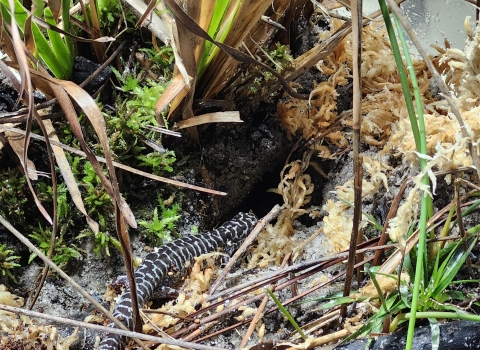Plan Provides Hope for Reintroduction of Hawaiian Crow Back into the Wild
A revised recovery plan outlining the essential steps in preventing the extinction of the endangered Hawaiian crow, also known as the ‘alala, was released today by the U.S. Fish and Wildlife Service. Described in the early 1900s as impudent, curious, noisy, and numerous, today the ‘alala is one of the world’s rarest forest birds.
The ‘alala is found only on the of Hawai‘i. Revered by many Hawaiians as an ‘aumakua or spirit, the species holds a special place in native culture, and its feathers were used in kahili, a symbol of royalty. For many years now, the ‘alala has teetered on the brink of extinction, with the last pair disappearing from the wild in 2002.
“With the release of this recovery plan, we reach out to Big communities asking for their support in helping restore the ‘alala to its native forests,” said Patrick Leonard, field supervisor for the Fish and Wildlife Service’s Pacific Islands Fish and Wildlife Office. “Wildlife does not recognize property lines or jurisdictional areas. Working together, we hope to bring this charismatic bird back to its rightful place in Hawai‘i.”
The ultimate recovery goal is to restore multiple self-sustaining populations of the ‘alala within its historical range to allow removal of the species from the list of endangered and threatened species.
‘Alala recovery actions call for expanding captive propagation to minimize loss of genetic diversity, protecting suitable habitat and managing threats to the species, establishing new populations in managed habitat, establishing a program to increase public support, and continuing research and adaptive management practices for species recovery.
Due in part to the high cost of broad habitat restoration needs, the estimated cost to implement all recovery actions described in the plan over the next five years is $14,380,000. A total estimated cost and date of recovery for the species cannot be determined at this time since the future of the species depends upon the success of future reproduction and reintroductions back to the wild.
Since 1993, the ‘Alala Recovery Team has been responsible for recommending management actions to recover the species and developing this revised recovery plan. The plan is based on long-term management of the species with an immediate focus on captive propagation to decrease the loss of genetic diversity.
The ‘Alala Recovery Team is composed of two private landowners, two avian captive propagation specialists, and representatives from the Hawai‘i Audubon Society, the Hawai‘i Division of Forestry and Wildlife, the U.S. Geological Survey’s Biological Resources Discipline, the U.S. Fish and Wildlife Service, and two universities. All comments received during the public comment period for the draft revised plan were considered in the development of this revised recovery plan.
The ‘alala is the largest Hawaiian forest bird after the endangered ‘io or Hawaiian hawk, and is the only surviving member of a group of crow species that once inhabited the Hawaiian archipelago prior to human colonization. The crow is an omnivorous, forest-dwelling bird endemic to dry and moist forests on the of Hawai‘i. Although ‘alala were abundant in the 1890s, their numbers decreased sharply throughout the 20th century despite legal protection conferred by the Territory of Hawai‘i in 1931 and the federal and state Endangered Species Acts in 1973 and 1982. By 1987, the wild ‘alala population was reduced to a single bird in north Kona and fewer than 20 birds in central Kona.
Many parties including the Service came together in the early 1990s to establish a comprehensive recovery program. Between 1993 and 1996, eight clutches of one or more ‘alala eggs were collected or salvaged from wild nests, yielding 13 chicks in captivity. Since 2002, no birds have been seen in the wild.
Between 1993 and 1998, 27 juvenile ‘alala from both captive and wild parents were raised in captivity and released in the South Kona district. From these releases, much was learned regarding threats to released birds and the types of management needed to minimize these threats. Due to a variety of causes, 21 of the released birds died, and the remaining 6 were recaptured and reintegrated into the captive flock. The last known reproduction of birds in the wild was in 1996.
Threats to the conservation and recovery of the ‘alala include predation by nonnative mammals and the ‘io, introduced diseases such as toxoplasmosis (a disease spread by feral cats), and habitat loss and fragmentation. Inbreeding may also be reducing the reproductive success of the captive population, and loss of wild behaviors in captivity may reduce the survival skills of reintroduced birds.
At present, two captive propagation facilities – the Maui and Keauhou Bird Conservation Centers managed by the Zoological Society of San Diego – are maintaining 56 ‘alala. Within five years, according to population genetic modeling, the population needs to grow to at least 75 birds in order to avoid further loss of genetic diversity and to begin reintroduction into the wild.
Copies of the plan are available on the U.S. Fish and Wildlife Service’s website at http://www.fws.gov/pacificislands/ or by calling the Fish and Wildlife’s Honolulu office at 808 792 9400.


